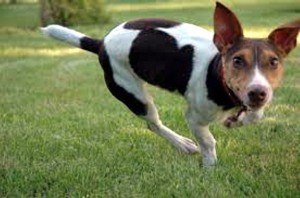I’m going to digress from my series on “Meetings With Remarkable People” even though I have not yet written about some of those who most influenced me. Portraying them is an intimidating task, so I thought I’d approach them through a quality that they had in common and in abundance: creativity.
Creative: I hate the word — its elementary school connotations, the dull echo of arts and crafts classes and parent-teacher conferences. I prefer terms like generative, innovative, imaginative, and inventive. However, “creative” is the term most widely recognized, and it’s applied to an important branch of the study of human psychology and neuroscience, “creativity theory.”
Whatever it’s called, I have been an amateur scholar of it since reading Arthur Koestler’s The Act of Creation many years ago. I was driven by a hunger to understand my own relentless urge to imagine, scheme, design, invent, make, compose, and shape things, and hoped that greater literacy in the field might help me corral my wayward brain and actually do something useful with my predilections. From Koestler I went on to Howard Gardner and Mihalyi Csikszentmihalyi, and since then to many others in related fields.
I was pleased to discover that what I read largely jibed with my own experiences.
In recent years, I have increasingly focused my classes in Creative Writing on creativity itself, exploring the psychology, neuroscience, and, most importantly, the process and practice of generative activity. My students then apply the principles to imaginative, effective uses of language, but the creative state can serve any act in any discipline.
This year, we began by discussing Dr. Stuart Brown’s perspectives as articulated in his book Play and by the National Institute for Play, which he founded. I first encountered his work only last year, but I was immediately struck by the parallels between his thesis and Koestler’s focus on laughter. (You can watch Brown’s inspiring TED talk at http://www.ted.com/talks/stuart_brown_says_play_is_more_than_fun_it_s_vital?language=en).
I often jokingly quote the maxim that “necessity is the mother of invention” — actually, I usually punch it up a bit, saying sheer desperation is the real mom — and there are theorists who argue for this view. (Another school puts creativity’s origin in various psychopathologies; in fact, scores of theories are commonly referenced in discussion of the topic.)
In reality, though, I’ve always agreed with Dr. Brown that the root of inventiveness is an organic exuberance derived from curiosity, the hunger for novelty, the yearning for empowerment, and a keen savor of the heightened sensory state awakened by risk-taking.
To this I add one nameless instinct, best described by an anecdote.
My friend, the award-winning composer Nicholas C. K. Thorne, once lived in a small house on a remote hilltop, surrounded by hundreds of acres of fields. He puzzled and marveled at the behavior of his dog whenever he let her out of the house. She would tear through the fields, leap, circle madly, bite wildflowers, roll, race, tumble — a display of absolute, ultimate exertion.
She wasn’t hunting or even pretending to. She was using her body and reflexes, every sinew and nerve, to their utmost. I witnessed her romps many times and they never failed to astonish me.
Groping for words to frame the ineffable, Nick said “She does it because she can.” He recognized that she was doing what he did at his piano, in front of his score-in-progress. She was using the whole instrument of her being because it is intrinsically joyful to do so.
I need a term for this fact: We all have a yearning to use the full range of our capacities. When we do, we not only experience pleasure, we strengthen all of these abilities because we exercise them. If we were keyboards, we’d want every key to be played. If we were bows, we’d want to be bent to our utmost extent.
What is a good word for this tropism? Fullness? Wholeness? Utmostness?
Humans are complex beings; we have what Dr. Brown calls “a divine superabundance of neurons” and thus the capacity, the need, to play in innumerable ways. The practical tasks of daily routine do not allow us to use the full range of our innate capabilities — and so we play. We create.
In forthcoming posts, I’ll consider more of Dr. Brown’s work, along with the thoughts of Gardner, Csikszentmihalyi, Koestler, Rimbaud, the Surrealists, the Imagists, Schmidhuber, Kahneman, and others that I’ve found useful for understanding and liberating creative energies.



